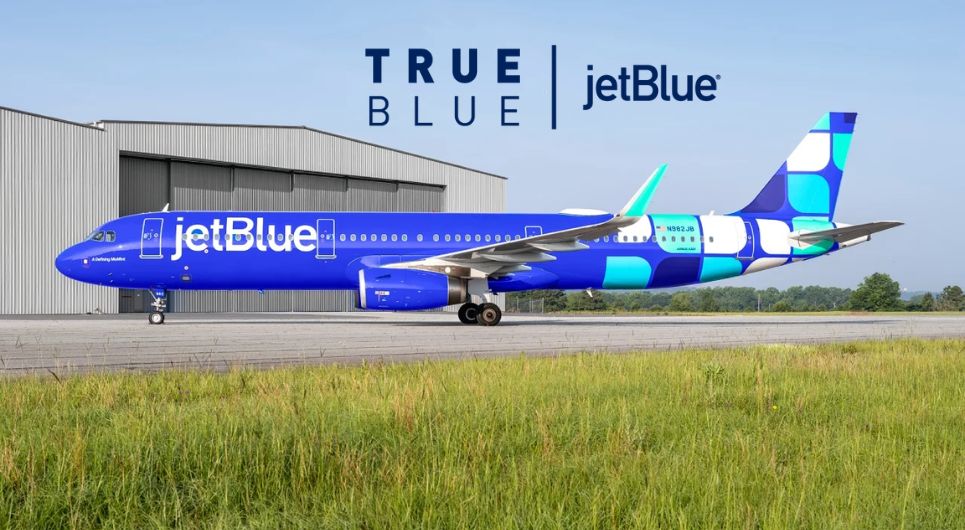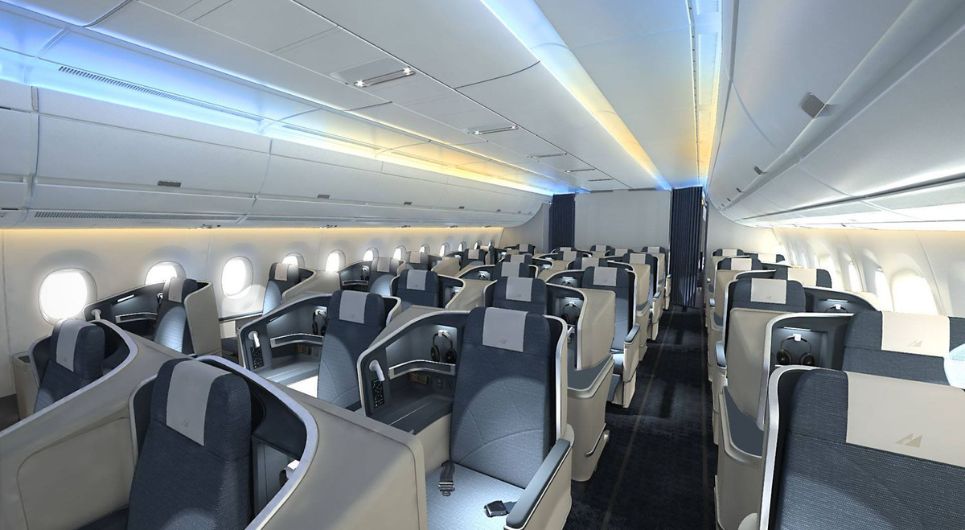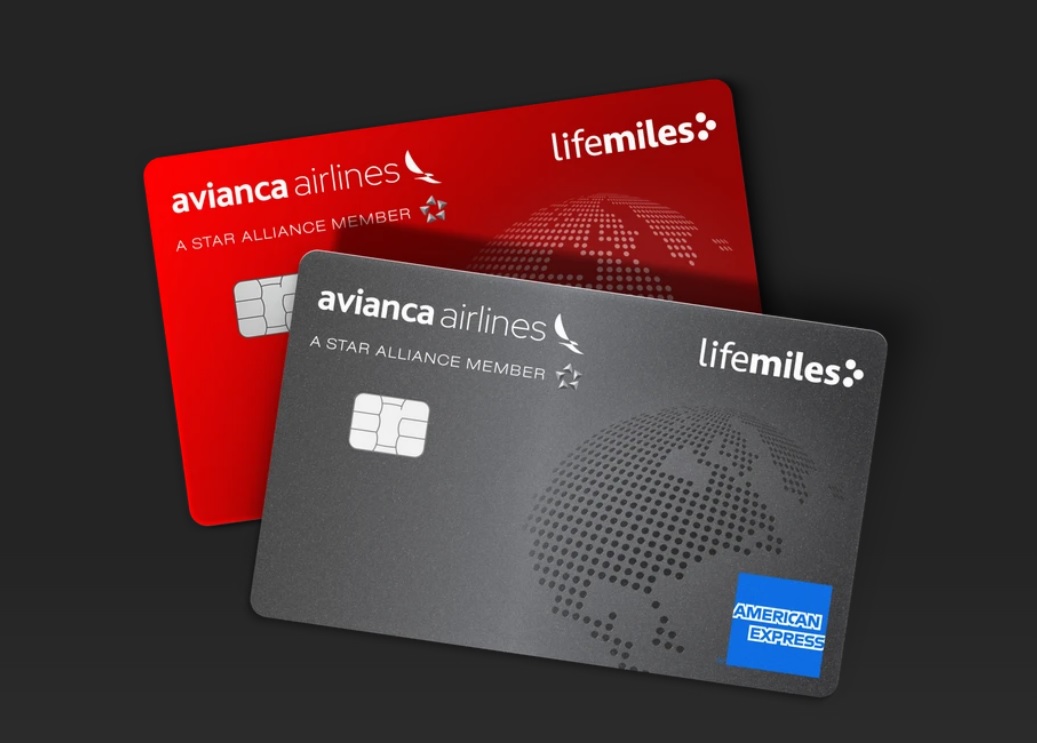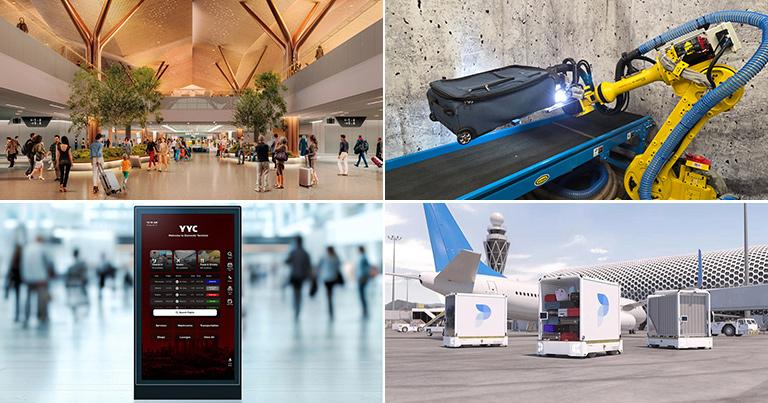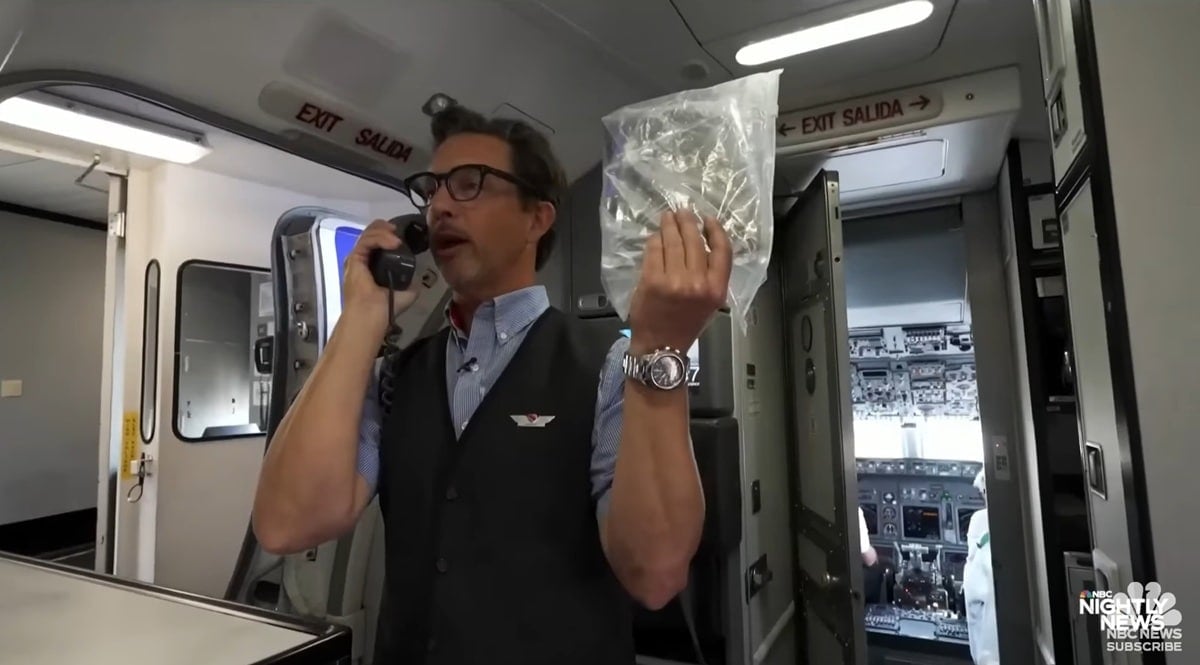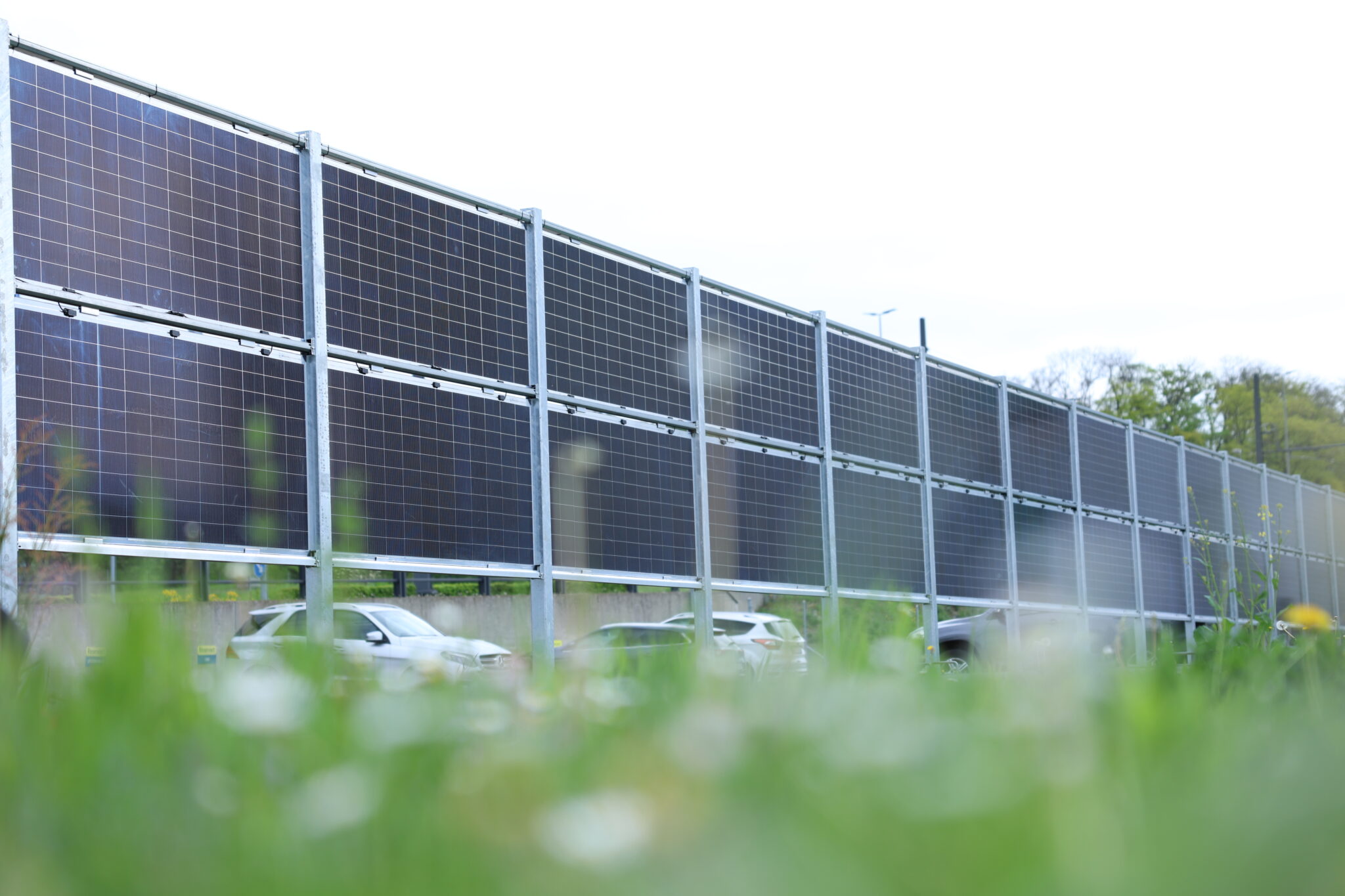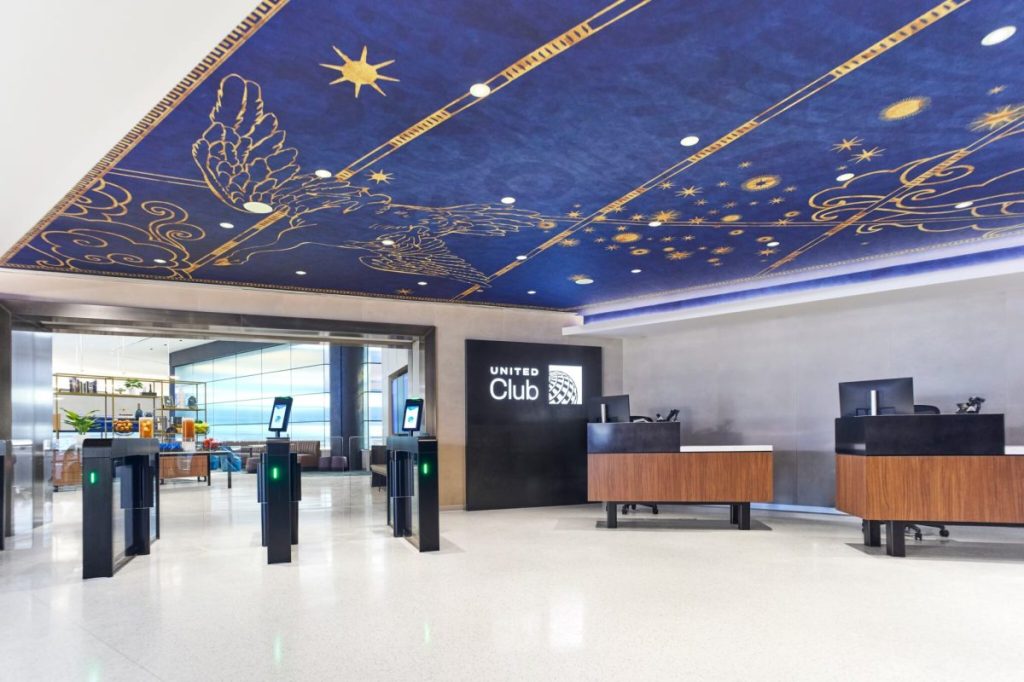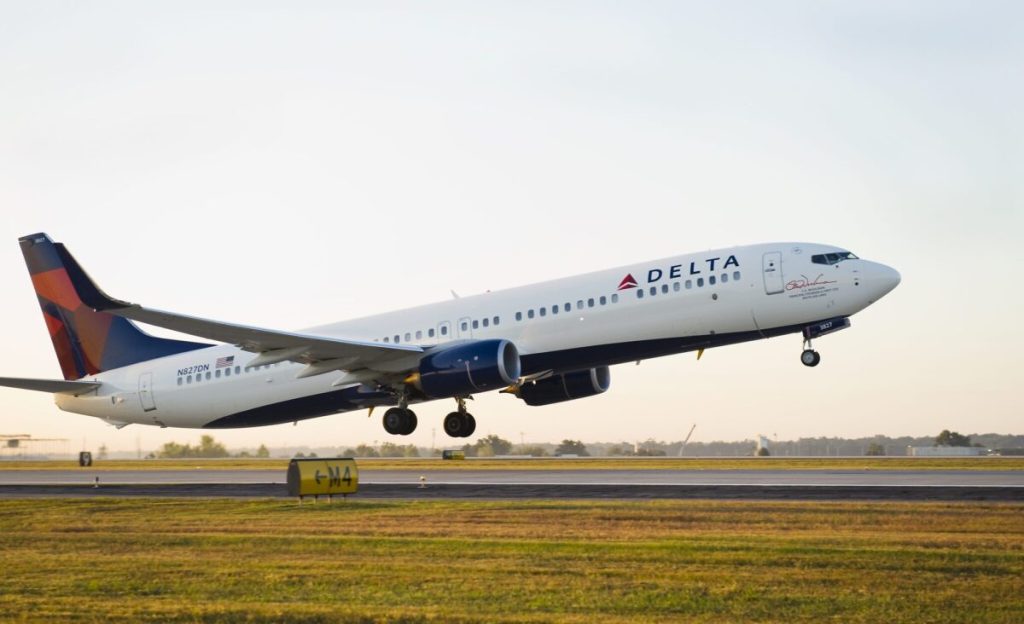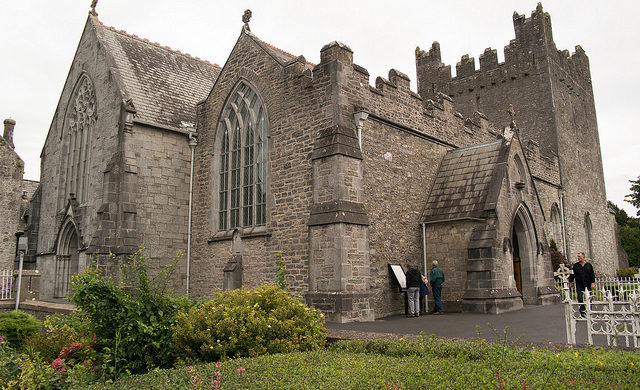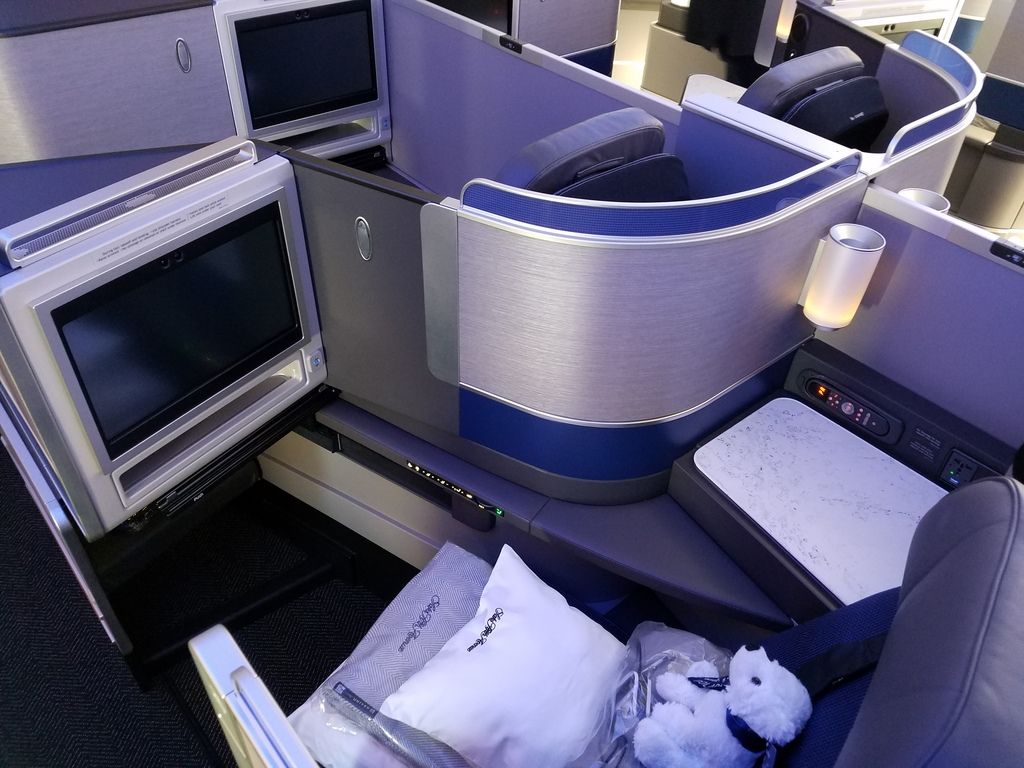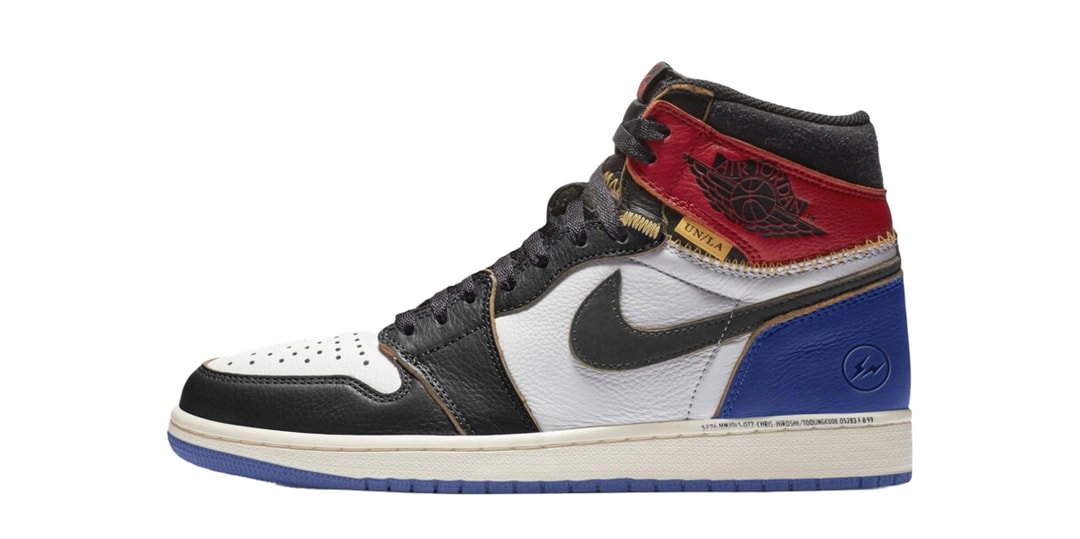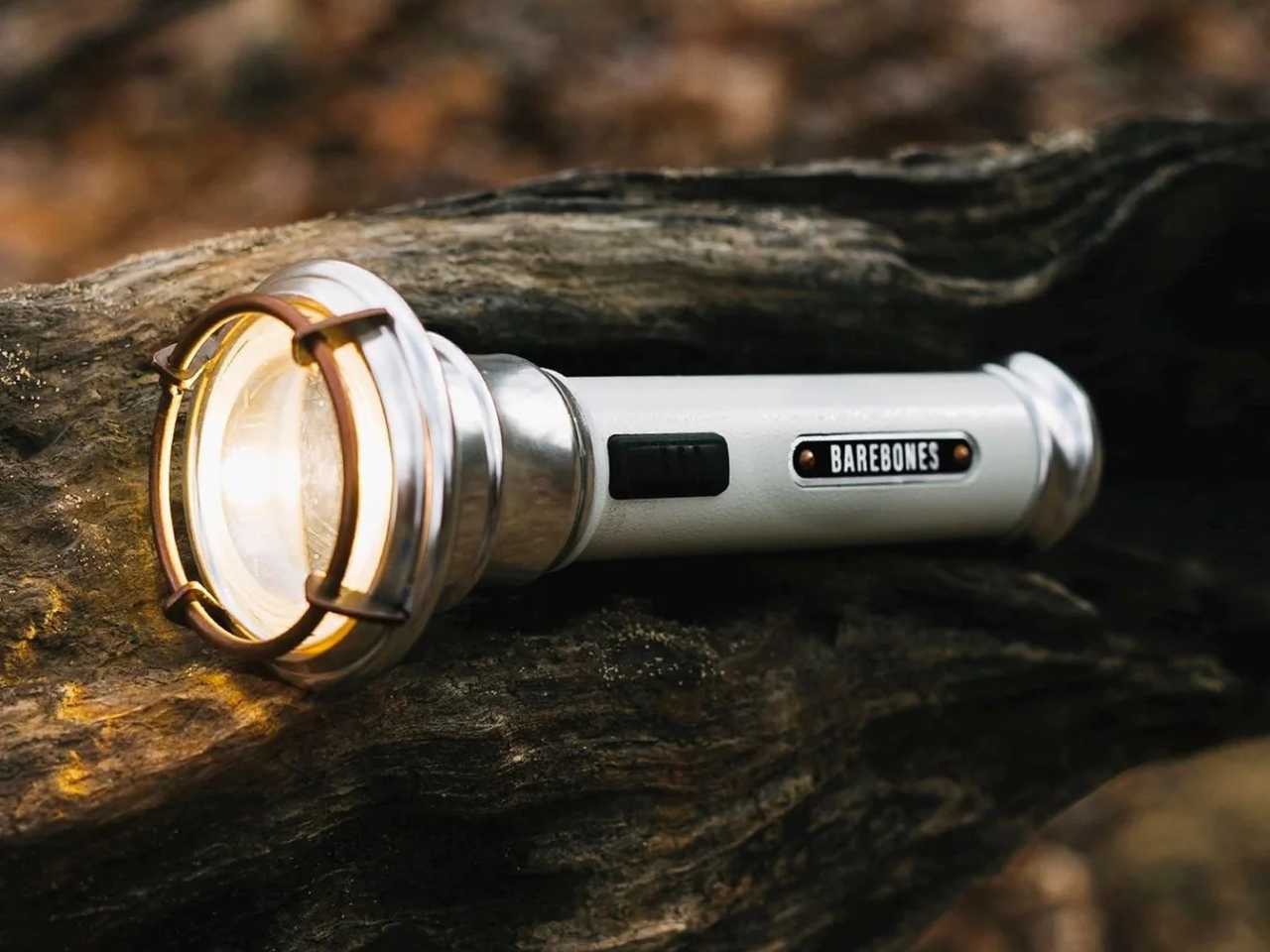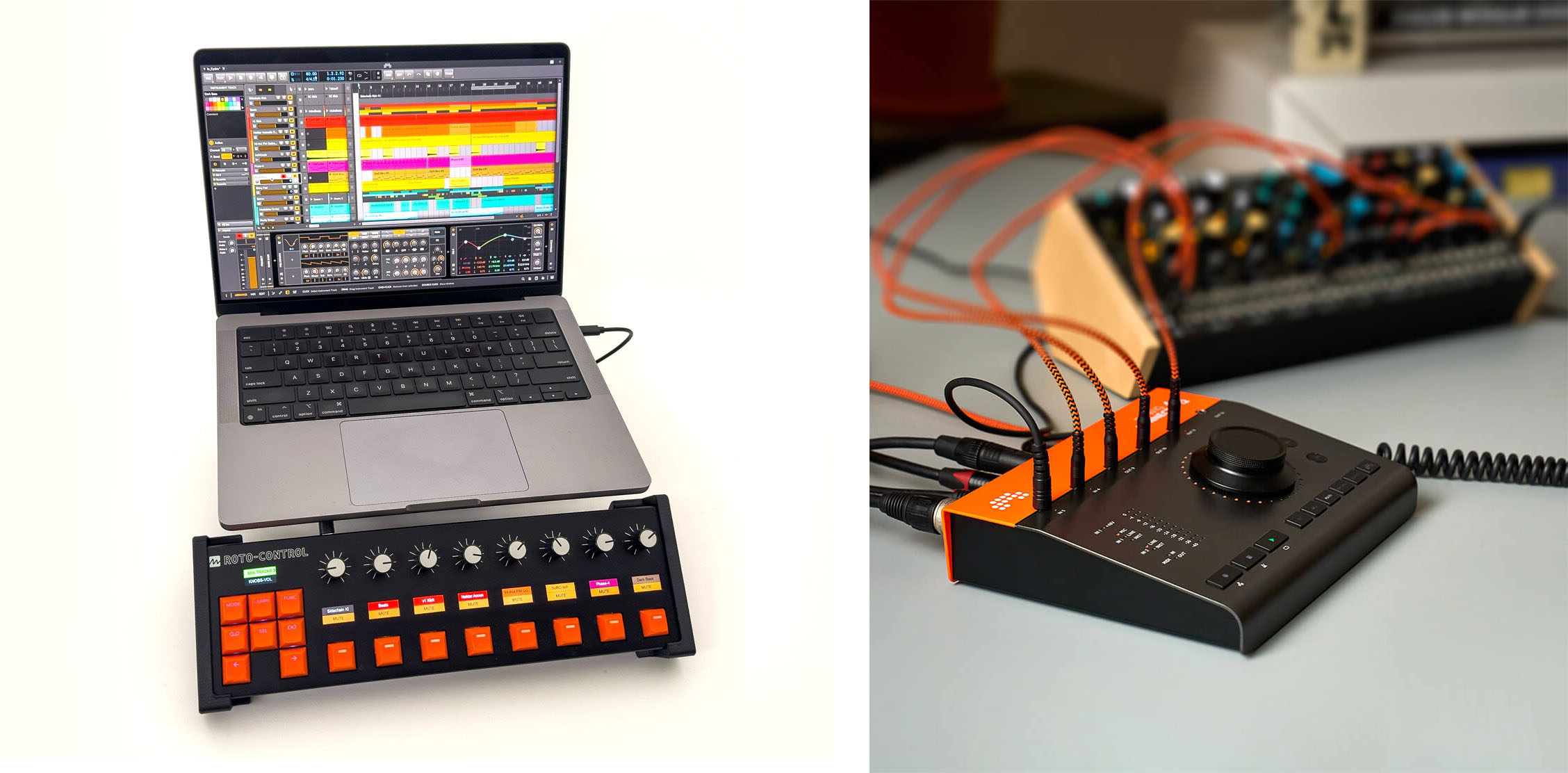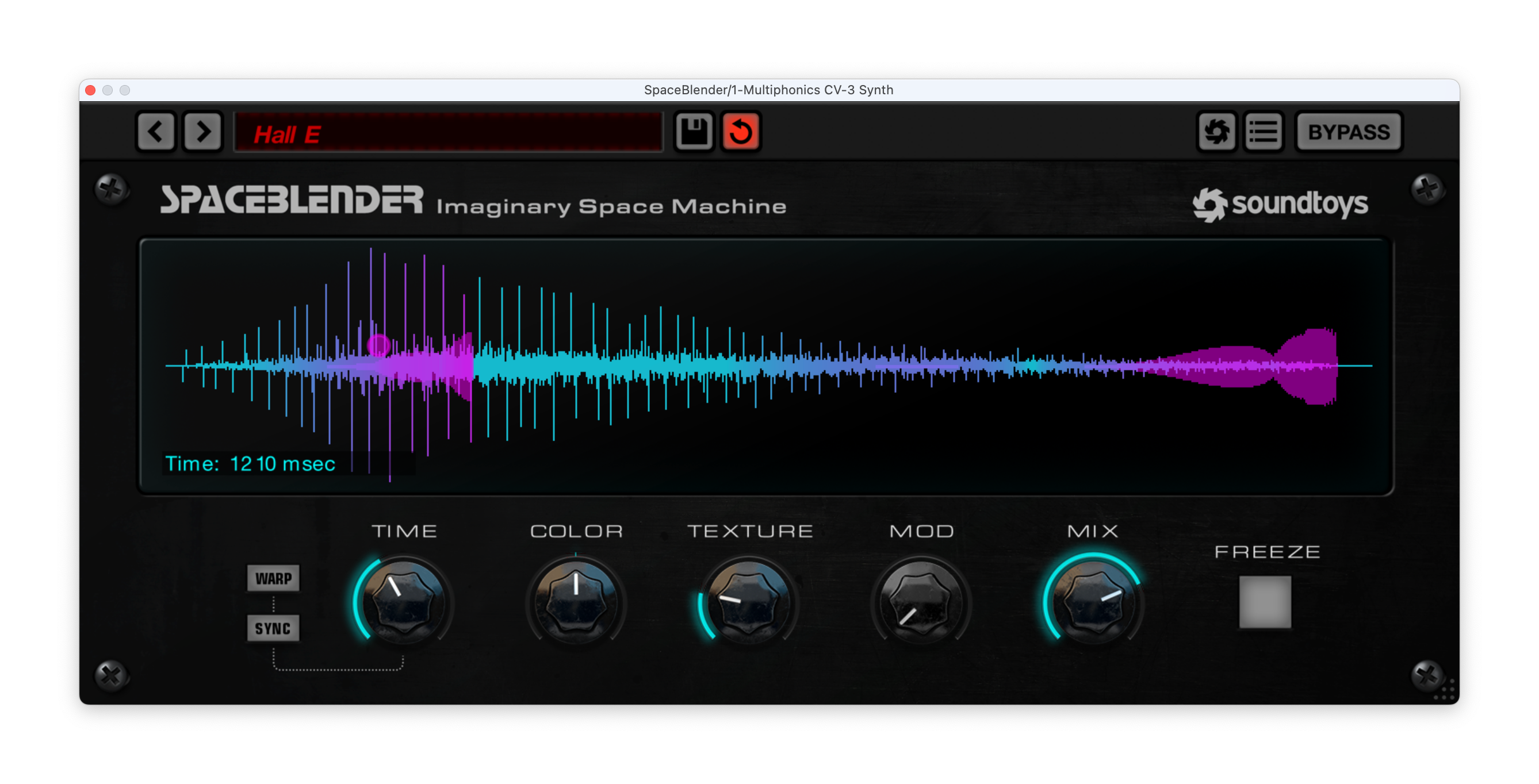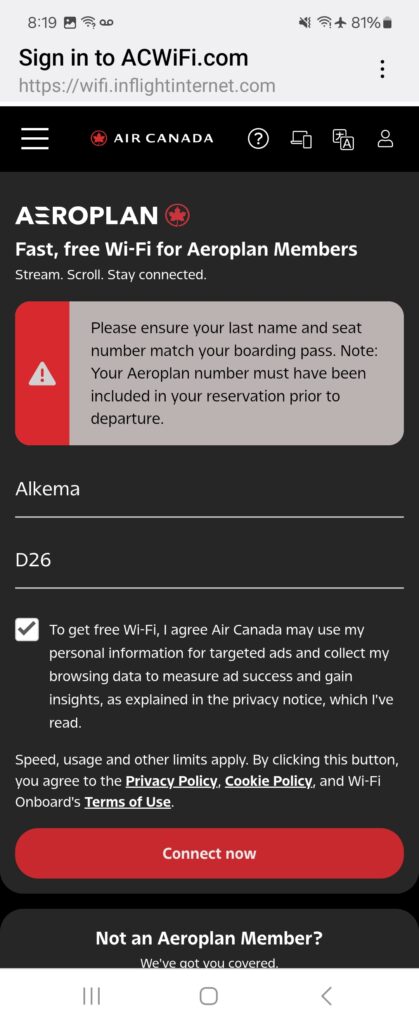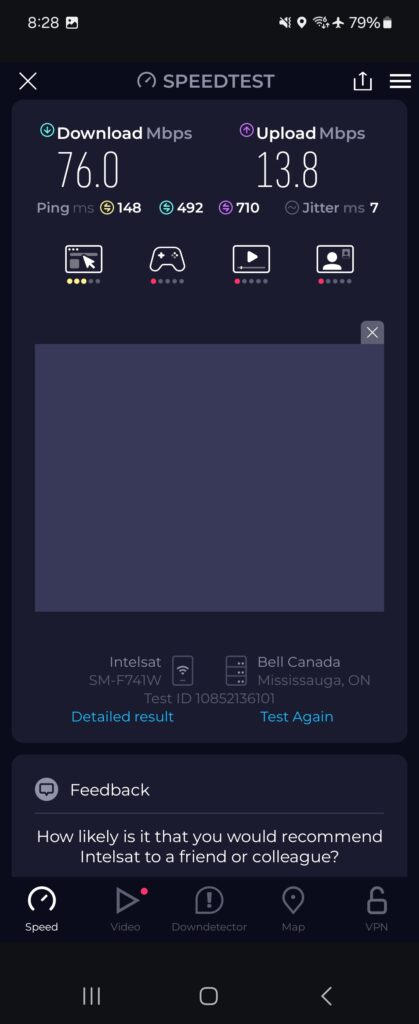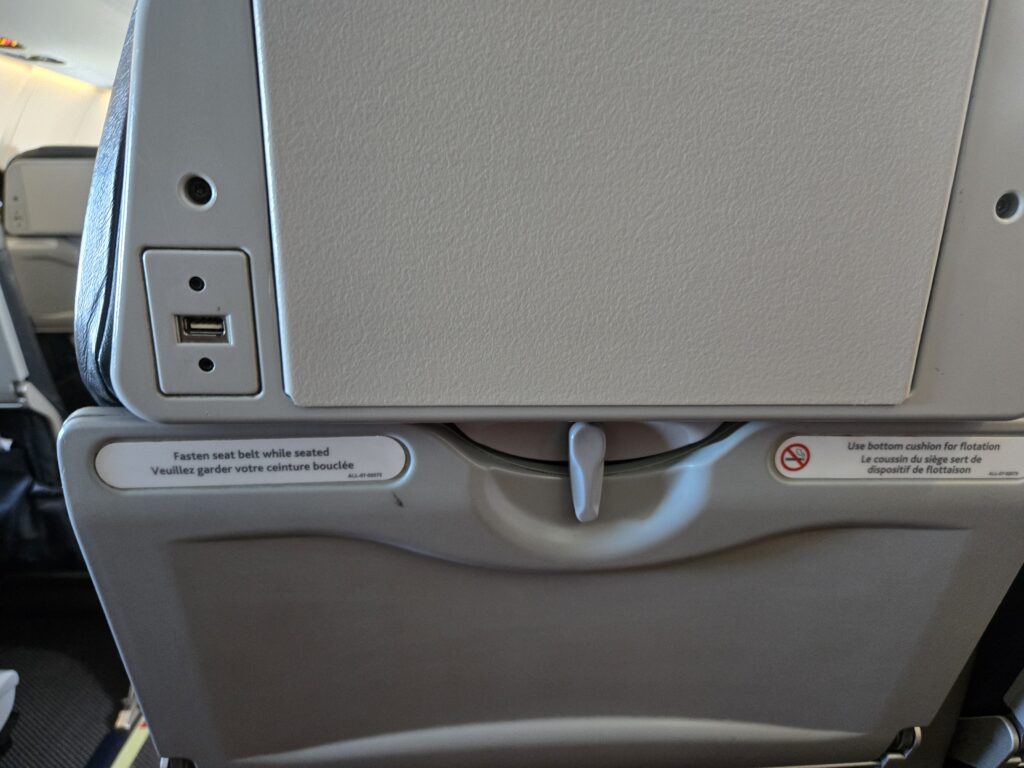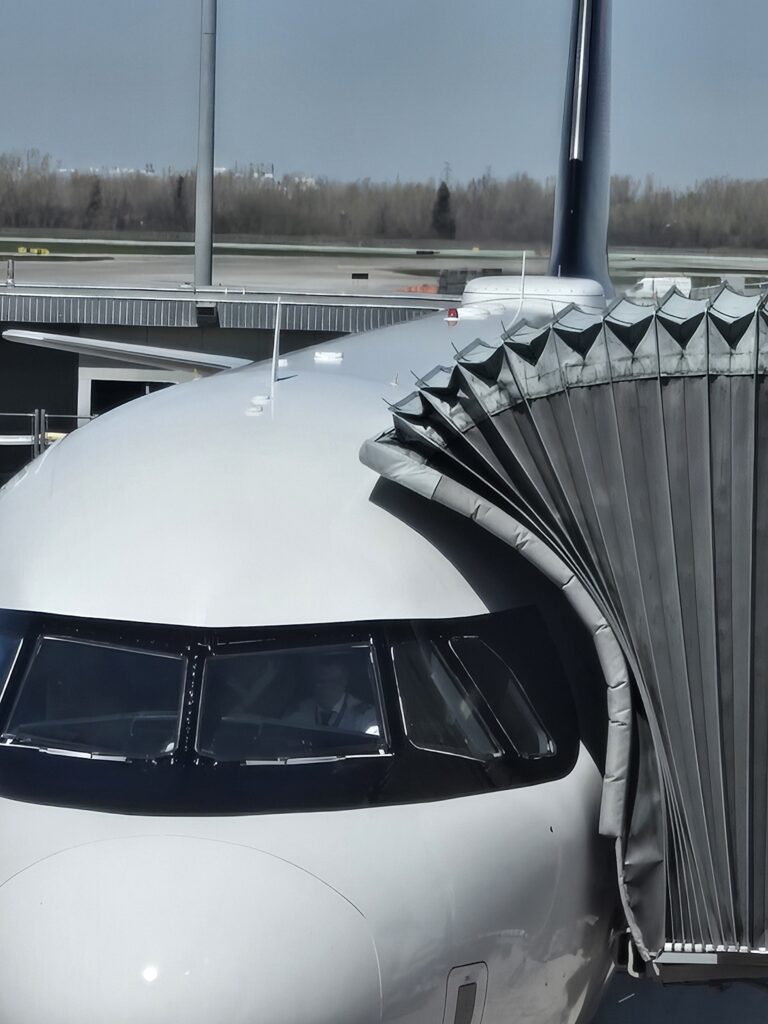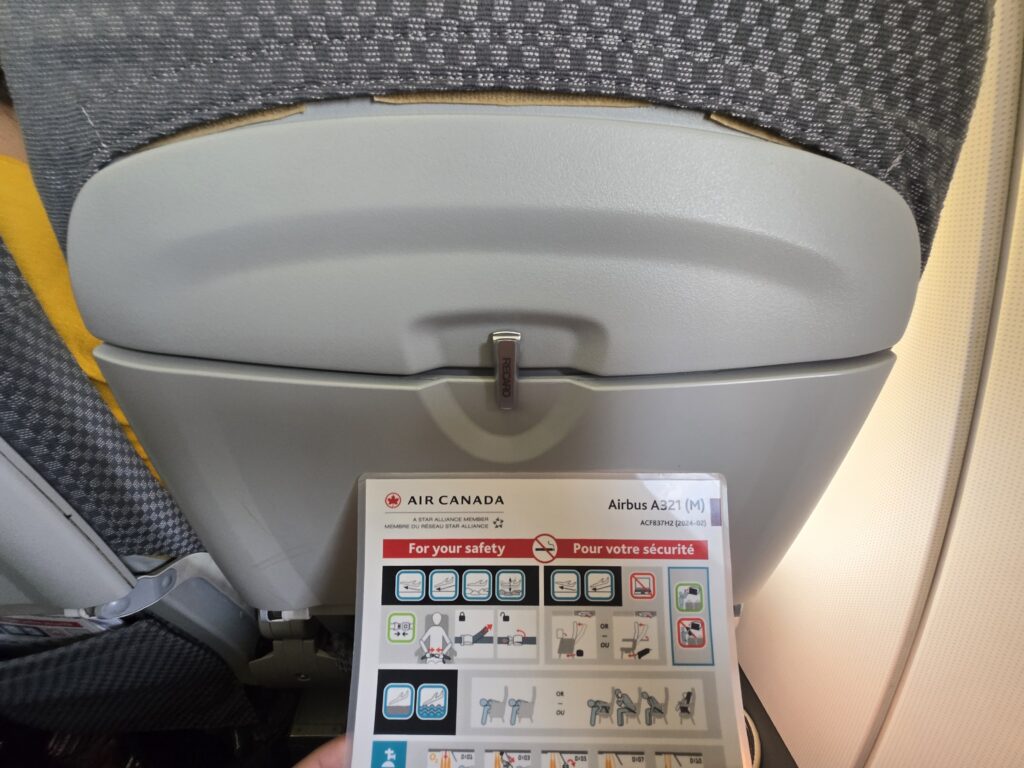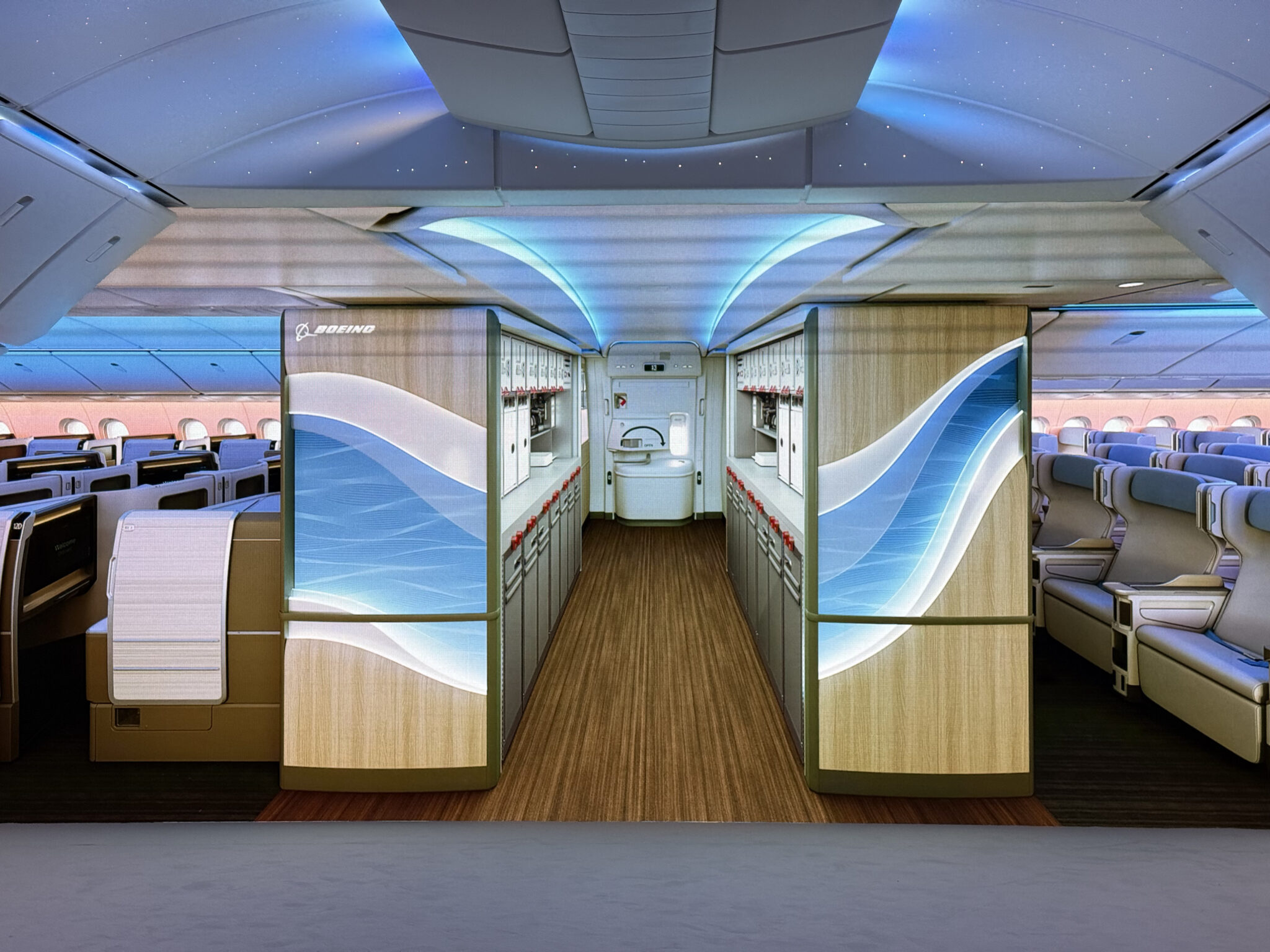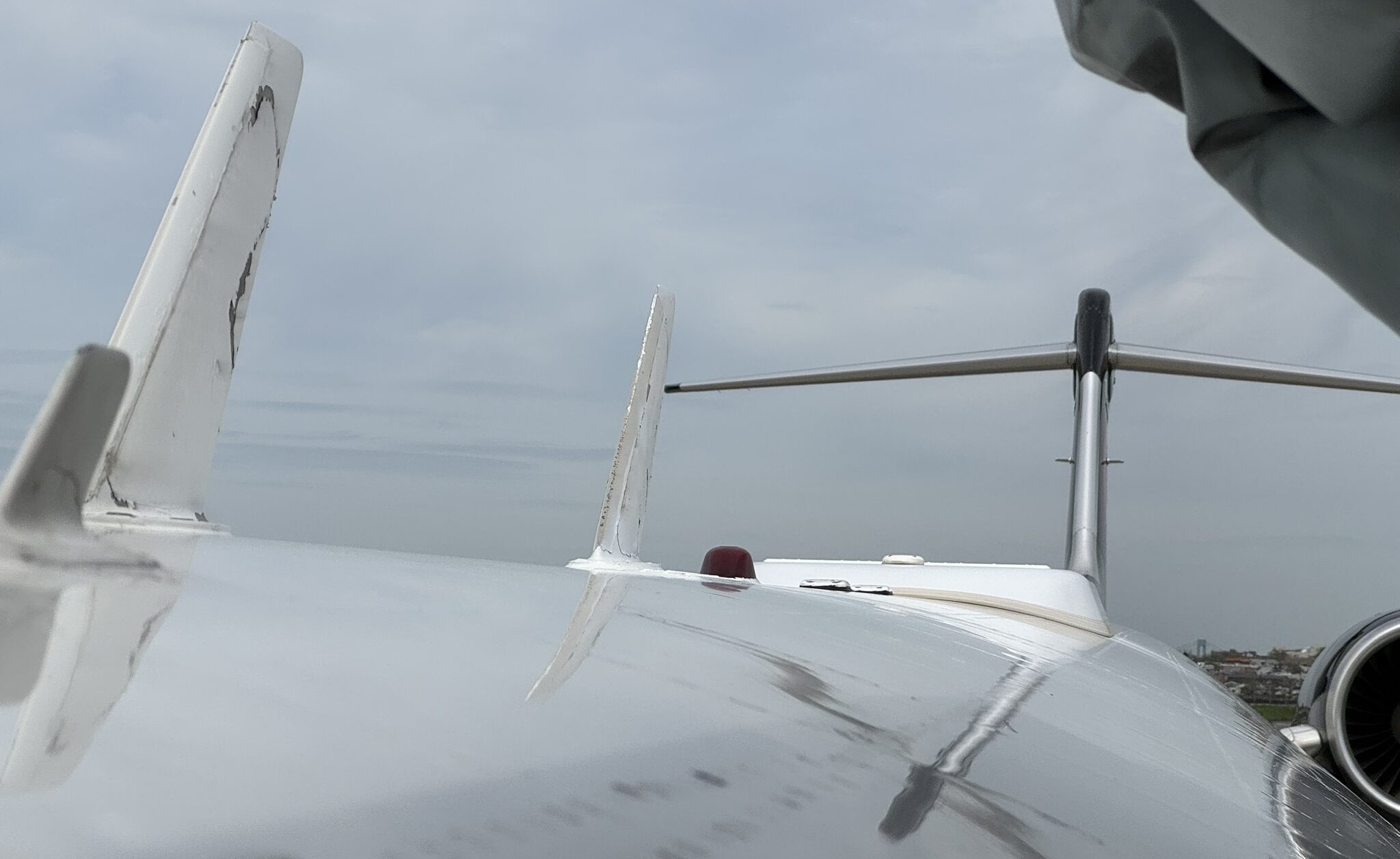Blazing fast Internet on an RJ? Air Canada stuns in free Wi-Fi rollout
A new day is dawning for the passenger experience aboard regional aircraft serving North America. Air Canada now offers free, Bell-sponsored inflight Wi-Fi to Aeroplan loyalty members on 88% of its entire fleet, notably including all its 76-seat CRJ900s. And later this year, pending certification, it will install broadband connectivity on its Embraer E175 regional... The post Blazing fast Internet on an RJ? Air Canada stuns in free Wi-Fi rollout appeared first on Runway Girl.

 A new day is dawning for the passenger experience aboard regional aircraft serving North America. Air Canada now offers free, Bell-sponsored inflight Wi-Fi to Aeroplan loyalty members on 88% of its entire fleet, notably including all its 76-seat CRJ900s. And later this year, pending certification, it will install broadband connectivity on its Embraer E175 regional jets and De Havilland Q400 turboprops to support free Wi-Fi.
A new day is dawning for the passenger experience aboard regional aircraft serving North America. Air Canada now offers free, Bell-sponsored inflight Wi-Fi to Aeroplan loyalty members on 88% of its entire fleet, notably including all its 76-seat CRJ900s. And later this year, pending certification, it will install broadband connectivity on its Embraer E175 regional jets and De Havilland Q400 turboprops to support free Wi-Fi.
While all Aeroplan members benefit from Air Canada’s pivot to the free Wi-Fi model — with all routes expected to be covered in 2026 — the carrier’s regional jet passengers are in for a real treat. That’s because the E175s are earmarked for the same solution as now found on the CRJ900s: Intelsat’s new multi-orbit inflight connectivity service which is powered by Low Earth Orbit (LEO) and geostationary (GEO) satellites and is already wowing passengers.
On the heels of RGN contributor Jason Rabinowitz’s amazing, albeit paid Wi-Fi session aboard an Air Canada CRJ900 last week, your Toronto area-based author was eager to see if I’d have the same awesome experience when Air Canada activated free Wi-Fi on 1 May. And so when an invitation landed in my inbox to test the free service as a guest of the airline, I jumped at the chance to give it a whirl on a Toronto Pearson (YYZ)-Montreal (YUL) roundtrip.
The experience aboard this Air Canada CRJ900 on the outbound flight left my jaw on the floor. 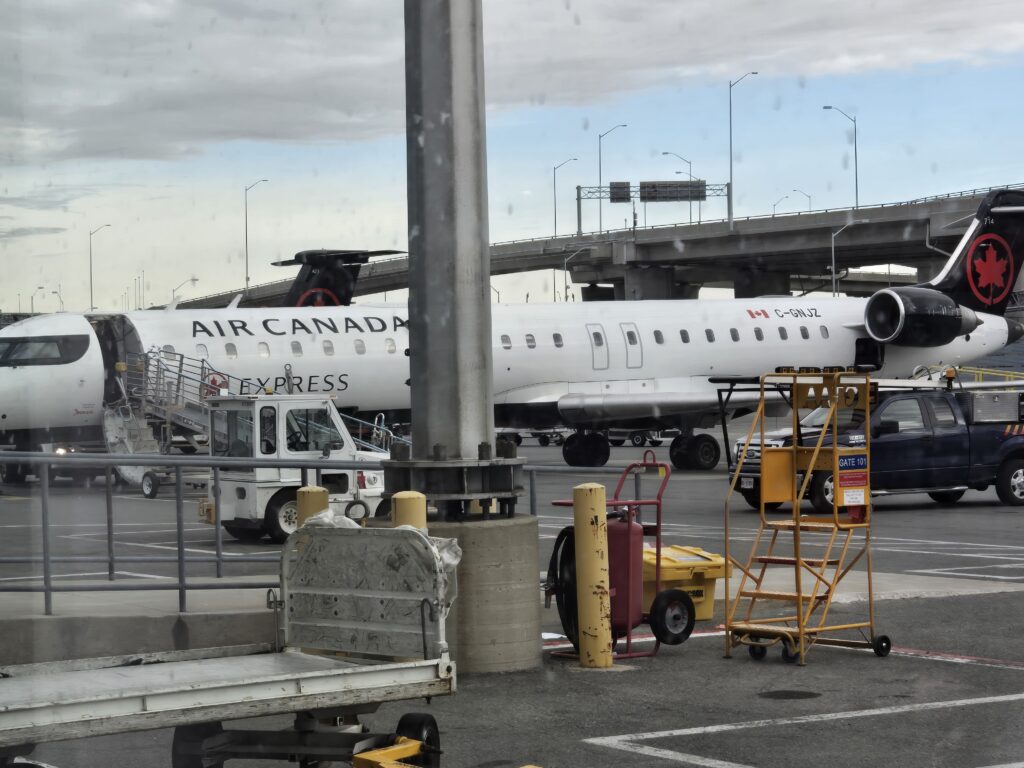
Blink and you might miss the slimline Gilat/Stellar Blu electronically steerable antenna (ESA) atop the CRJ900. But don’t let the size of the hardware fool you. It has shown itself capable of supporting the sort of Wi-Fi you’re accustomed to at home. Heck, the multi-orbit LEO/GEO service was even better than my usual at-home experience. I kid you not.
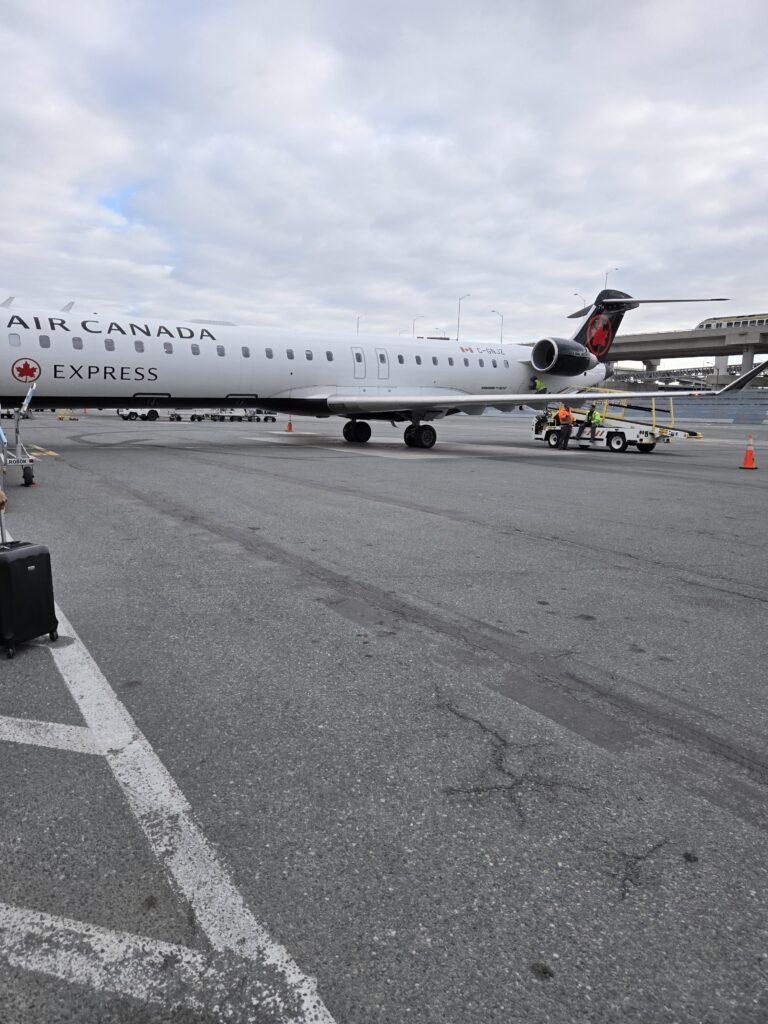 But first, there are a few hoops to jump through. In order to avail of free Wi-Fi, passengers must ensure their Aeroplan account number is connected to the booking. This information can be added at any point prior to departure, including during the booking or check-in process. If you haven’t taken these steps beforehand, you will still be able to sign up as a member of Aeroplan in-flight, but you won’t be able to access free Wi-Fi on that particular flight, as Air Canada warns on its inflight portal.
But first, there are a few hoops to jump through. In order to avail of free Wi-Fi, passengers must ensure their Aeroplan account number is connected to the booking. This information can be added at any point prior to departure, including during the booking or check-in process. If you haven’t taken these steps beforehand, you will still be able to sign up as a member of Aeroplan in-flight, but you won’t be able to access free Wi-Fi on that particular flight, as Air Canada warns on its inflight portal.
Once on board, turn on Airplane Mode on your phone, look for the “AC Wi-Fi” network, and connect. You’ll be directed to a portal where you must plug in your seat ID (number first, then letter) and your last name. It is not necessary to have the Air Canada app in order to access the free connection.
Those who aren’t members of Aeroplan or who choose not to join the loyalty program can purchase Wi-Fi on board for C$8, which lasts the duration of the flight.
Speed tests are nice, but I personally judge any airborne connection by its ability to let me accomplish in-flight what I can accomplish on the ground. So, one of my first tasks was to access the app store and download apps via the connection. Snapchat downloaded in under two minutes! It worked flawlessly.
Streaming videos over a variety of streaming apps, I observed zero lag or buffering. I downloaded and uploaded photos with ease, and shared a 1080p video to Instagram Stories with equal ease.
Receiving a voice call from my mother via FaceBook Messenger whilst in-flight, she informed me that my voice sounded “clear as a bell”. I quickly disconnected as Air Canada does not permit inflight voice calls.
I jammed as much activity in as I possibly could during the 1hr 20min flight, and the connection never faltered. Speed tests showed downloads of 60 Mbps, 67 Mbps and 76 Mbps and uploads of up to 14.8 Mbps. Latency averaged 150 ms, leading me to believe we were likely using the LEO portion of Intelsat’s multi-orbit IFC service, as supported by the satellite operator’s LEO partner, Eutelsat OneWeb. My laptop saw a slightly lower speed of 58 Mbps down, though I didn’t observe any difference in service.
Each Air Canada passenger is only eligible to access free Wi-Fi with one device at a time. When I logged into the network via my laptop to send a couple of emails, I was automatically and immediately logged out of my phone.
A USB-A power port is available at each seat, but alas, my outlet did not work. Thankfully, my devices were fully charged; when we landed my mobile’s battery was at 50%. Seatback IFE has notably been removed from the seatbacks on the CRJ900.
Waiting for my return flight at the Air Canada Signature Cafe in Montreal, I was able to use the lounge Wi-Fi. Interestingly, this connection was much slower than the inflight connection, clocking in at 19 Mbps on the laptop.
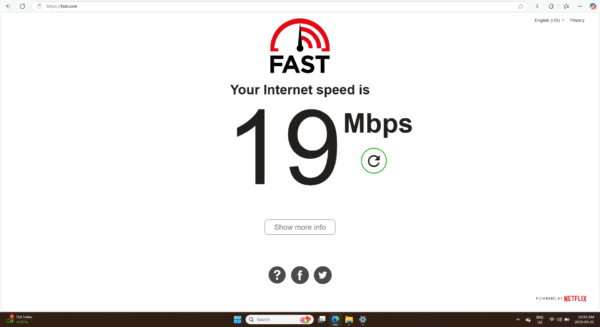 On board the return flight, operated by the much larger Airbus A321, which is fitted with an updated version of the Intelsat 2Ku GEO-focused satcom solution, I went through the same login process as the outbound: I switched on Airplane Mode, connected to the network and plugged in the seat number and my last name.
On board the return flight, operated by the much larger Airbus A321, which is fitted with an updated version of the Intelsat 2Ku GEO-focused satcom solution, I went through the same login process as the outbound: I switched on Airplane Mode, connected to the network and plugged in the seat number and my last name.
While the download speeds started out strong when the A321 was on the ground, clocking in at 53 Mbps, they dropped to 33 Mbps, then 24 Mbps and then 1.5 Mbps during the flight. Latency was rather glaringly higher in speed tests.
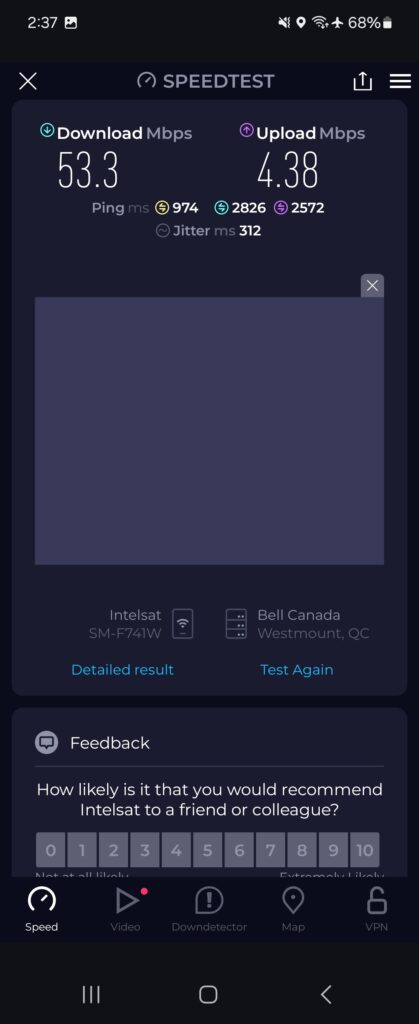 There was some mild buffering of videos, and on a couple of occasions the signal completely disappeared. That being said, on this a narrowbody aircraft with some 108 or more seats than on the CRJ900, I was still able to accomplish all the tasks I completed on the earlier flight, with a little bit of patience.
There was some mild buffering of videos, and on a couple of occasions the signal completely disappeared. That being said, on this a narrowbody aircraft with some 108 or more seats than on the CRJ900, I was still able to accomplish all the tasks I completed on the earlier flight, with a little bit of patience.
There was no in-seat power on this aircraft, which, considering the push to personal devices, seems like a very missed point.
This particular Air Canada A321 also did not offer seatback IFE. I confess I’m more interested in having useable Wi-Fi than a screen on a flight of this short hop duration, but if I’m flying out west I do want a seatback screen and power, plus Wi-Fi. That’s just me.
As mentioned, some 88% of Air Canada’s fleet offers inflight connectivity, covering a very large swath of the carrier’s North American routes, including to sun spots in Florida and the Caribbean. The remainder of the fleet is being equipped this year and next, with Air Canada also saying it’s “on track” to expand fast, free Wi-Fi to its long-haul international routes next year. It hasn’t yet announced the service provider for its Q400 turboprops (De Havilland is publicly known to be working to integrate SpaceX’s Starlink solution on the Q400.)
Mark Nasr, Air Canada’s executive vice president and Chief Operations Officer said in a statement that the fast, free Wi-Fi initiative “underscores Air Canada’s focus on elevating the customer experience, with leadership in providing streaming quality connectivity, at a pace unmatched by other airlines — at home and around the world.”
He also celebrated the forthcoming “industry first” with the upcoming launch of Wi-Fi on Air Canada Express Q400s serving Toronto’s Billy Bishop Airport.
Related Articles:
- Intelsat multi-orbit IFC showdown: AC CRJ900 versus AA E175
- Air Canada explores possible LEO augment for 2Ku
- American Airlines reverses course on free Wi-Fi
- Spirit Wi-Fi impresses in nearly ever way, except price
- Intelsat linefit and SB wins see multi-orbit IFC come to E2, 787
- Q&A with Norman Haughton as Air Canada preps to offer free Wi-Fi
Featured image of Gilat/Stellar Blu ESA atop an Air Canada CRJ900 credited to Intelsat. All other images credited to the author, Becca Alkema
The post Blazing fast Internet on an RJ? Air Canada stuns in free Wi-Fi rollout appeared first on Runway Girl.






![‘Omukade’ Trailer – Thai Monster Movie Unleashes an Insane Giant Centipede Nightmare! [Exclusive]](https://i0.wp.com/bloody-disgusting.com/wp-content/uploads/2025/05/image-30.jpg?fit=1713%2C931&ssl=1)

















































































































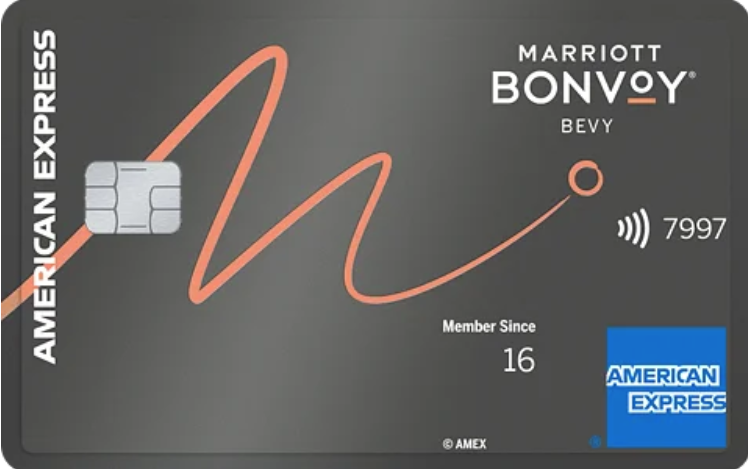




![100K strategy and powering up with the right cards [Week in Review]](https://frequentmiler.com/wp-content/uploads/2025/05/powering-up-credit-cards-1.jpg?#)
